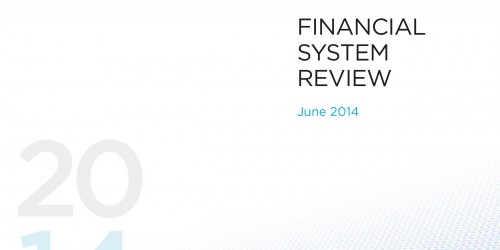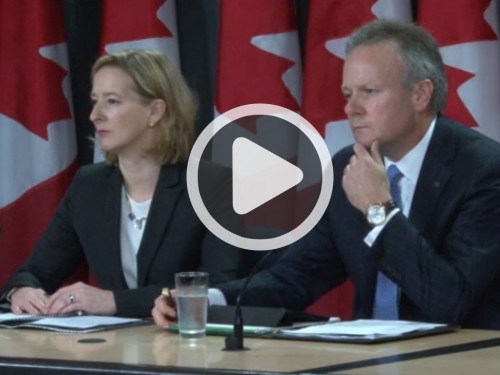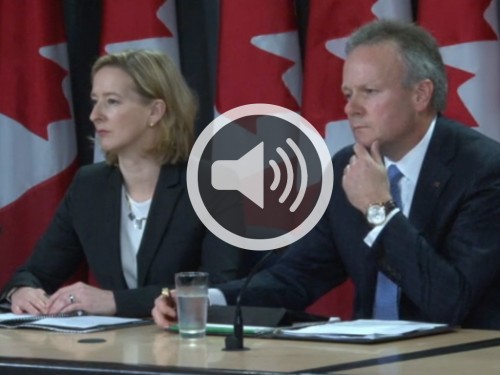Release of the Financial System Review
Good morning. It is my pleasure to hold this press conference with Carolyn Wilkins. Carolyn assumed the post of Senior Deputy Governor of the Bank of Canada on the 2nd of May. We are pleased to be here with you today for the inaugural press conference for the Financial System Review (FSR). The Bank published the June issue this morning.
An important part of the Bank’s work is to promote a stable and efficient financial system. We do this in a number of ways: providing liquidity facilities and serving as lender of last resort; overseeing key domestic clearing and settlement systems; and collaborating with domestic and international policy-makers to develop and implement policy.
Our research and analysis of financial stability is vital to this work. Since 2002, the FSR has been our flagship publication for promoting informed public discussion on all aspects of the financial system. This morning’s press conference extends that effort. Our job today is to help you leave with a solid understanding of the Bank’s assessment of financial stability in Canada, an appreciation of the complexity of the analysis and, importantly, how this work fits into our thinking about Bank policy.
Let me provide some context. Over the two decades leading up to the global financial crisis, a consensus emerged that keeping inflation low, stable and predictable was the best contribution that monetary policy could make to the financial well-being of Canadians.
Our inflation-targeting framework has always had a degree of flexibility built into it; and financial stability issues have always been part of the discussion. However, the crisis crystallized the view that financial stability and the outlook for economic growth and inflation are intrinsically linked. As a result, the Bank of Canada - like many other central banks - is reconsidering how to better integrate financial stability and monetary policy objectives.
The assessment of financial stability is becoming more rigorous and now follows a more structured analytical process, informed by models, better data and richer dialogue. This leads to more informed judgments around the risks to the financial system.
In this issue of the FSR, we have introduced an enhanced framework that explicitly identifies the underlying vulnerabilities in Canada. These are the pre-existing conditions that could amplify and propagate shocks through the Canadian system, regardless of where they originate.
This sets the stage for assessing risks - events that, if they occurred, would threaten the ability of the financial system to perform its core functions. Such risks materialize when trigger events interact with vulnerabilities to cause stress in our financial system.
This added depth allows a more complete understanding of our financial stability concerns. One can see that these diverse risks cannot literally be summed to estimate an overall level of risk. Nevertheless, after weighing the risks to financial stability through our improved framework and applying judgment, our level of comfort as policy-makers remains similar to what it was six months ago.
The clear separation of cause and effect - vulnerabilities and risks - allows a more accurate weighing of the risks to economic and financial stability. It allows us to consider both in an integrated fashion as we deliberate policy. That’s why our assessment of the risks to the financial system is so relevant. And that’s why we’re here with you now.
Before Carolyn and I take your questions, let me note the highlights from today’s FSR.
The top two vulnerabilities are related to the household sector. The first is the imbalances in Canada’s housing market. We still anticipate a soft landing. However, stretched valuations and some signs of overbuilding would expose the financial system to a sharp correction in house prices - which is a risk we’ve identified.
The second is the elevated level of indebtedness among Canadian households. This leaves households vulnerable to an unemployment shock or a sharp rise in interest rates.
The third vulnerability is our exposure to sizable potential external shocks. An example is the significance of global commodity prices to our economy and financial system.
The risks are viewed in the context of these vulnerabilities. The most important domestic risk is, as mentioned, a sharp correction in house prices. The probability of this risk materializing is low, given the expected strengthening of the global and Canadian economic recoveries. However, if it were to happen, its impact on the economy and financial system would be severe.
We also focus on three other key risks:
- a sharp increase in global long-term interest rates;
- stress emanating from China and other emerging markets; and
- serious financial stress from the euro area.
Before I open the floor to you, it is important to note that Canada’s financial system remains robust. It will continue to benefit from enhanced policy measures as the G-20 reform agenda is implemented, both domestically and globally.
With that, Carolyn and I are happy to take your questions.


